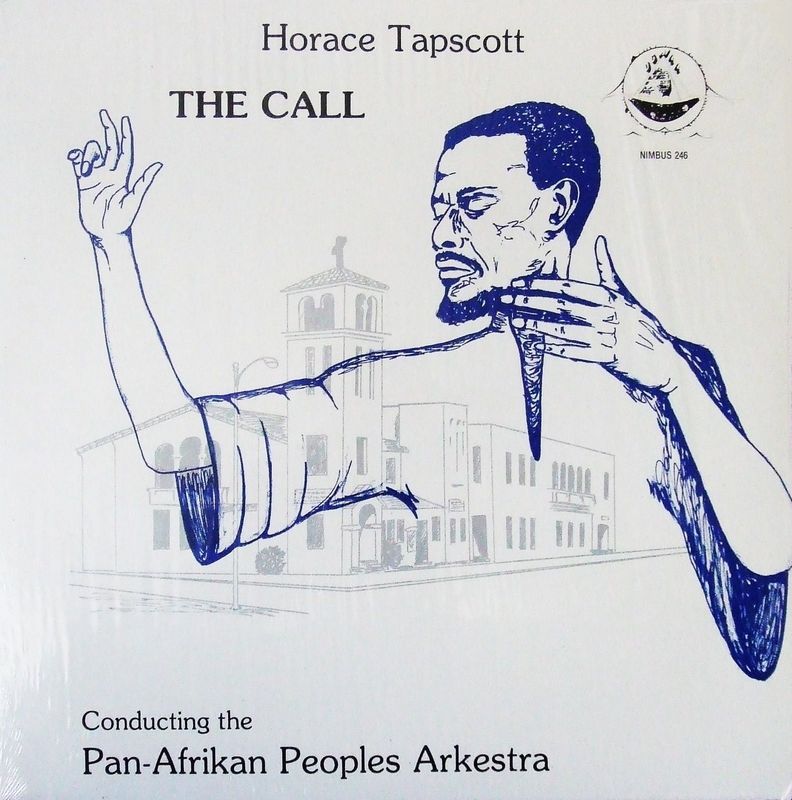“The [Lionel Hampton] band came to Los Angeles for a gig out on Sunset Boulevard. I’ll never forget. After the last performance, we were getting ready to head back to New York. At four o’clock that morning, I got off the bus….I wanted to do something else. I wanted my own thing; I wanted to write it and I wanted to help preserve the music….Nobody knew who wrote the music or cared….This is when I first started thinking about putting the Arkestra together and that’s why I got off the road to start my band, to preserve black music. I wanted to teach and show and perform the music of black Americans and Pan-African music, to preserve it by playing it and writing it and taking it to the community.” — Horace Tapscott*
In the early 1960s, Horace Tapscott (1934 –1999) left the Hampton band and returned to Los Angeles to fulfill his dream. He shifted his practice from the trombone to the piano, and—with the Pan-African Peoples Arkestra—began composing, archiving, and preserving. He was also a community activist who was blacklisted in the ’60s, and during the Watts Rebellion of 1965, the LAPD shut down his performances.
This week, at the Museum of Contemporary Art, filmmaker Barbara McCullough will present her documentary on Tapscott and the history of African-American art, music, and activism in Los Angeles.
HORACE TAPSCOTT: MUSICAL GRIOT, Thursday, March 9, 2017 at 7 pm.

The Call (1978 ) is the second LP by Horace Tapscott’s Pan Afrikan Peoples Arkestra.
Image: Coverjazz Canalblog

